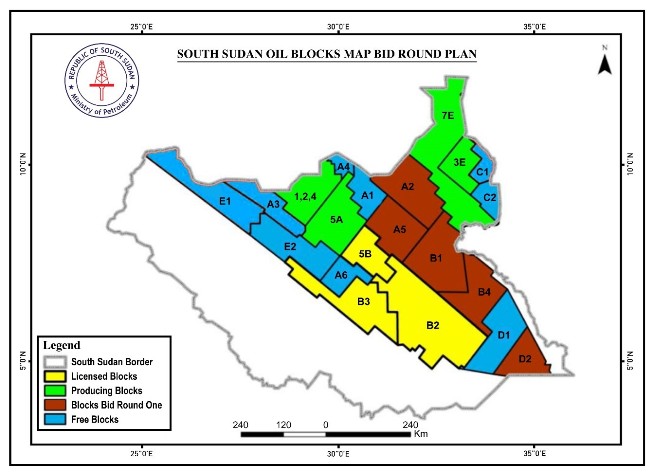South Sudan, being an ‘oil-prolific’ country, is viewed as one of Africa’s last unexplored frontiers – the holder of sub-Saharan Africa’s third largest proved oil reserves (3.5bn barrels of low-sulphur crude)
In South Sudan, first oil was discovered in the late 1970s when U.S. Chevron made major finds in Western Upper Nile in what is now Block 1, near Bentiu, and developed the Muglad Basin where they found two huge oilfields, Unity and Heglig, both in the South.
The hydrocarbons-rich areas are Bentiu, Greater Upper Nile, Jonglei, Melut, Muglad and Warrap. South Sudan produces two main crude blends: Dar and Nile (which are exported to Asian markets). The latter blend (33.9° API gravity, 0.06% sulphur) is most attractive to refiners because of its high fuel and gasoil yields. API, i.e., American Petroleum Institute gravity, an inverse measure to determine the weight of petroleum liquids in comparison to water. If a liquid has API gravity (above 10) it is considered a lightoil that floats on water. Conversely, API gravity (below 10) falls into the heavy oil category.

South Sudan – currently producing an estimated 150,000-170,000 bpd (from about 700 wells) – aims to boost output to 250,000 bpd by late 2021 when more of shuttered oilfields reopen and investments are directed towards exploration of existing and potential new blocks.
Probable natural gas (natgas) reserves are estimated at 30 trillion cubic feet (tcf) – proved figure is 3 tcf. Natgas associated with oilfields is mostly flared or reinjected. Capturing flare gas in oilfields will help increase natgas production – currently almost negligible.
Petroleum geologists are confident of finding more oil-gas reserves in South Sudan basins. The state-owned Nilepet plans to undertake a survey of both mineral resources and oil in a bid to showcase the country’s untapped potentials. Only 10% of oil-bearing basins have been explored to date. Chol Deng Thon Abel, managing director Nilepet, said, “So you still have 90% of the country not surveyed. But we still believe that we have huge reserves which is why we say South Sudan is an oil-rich country. National Petroleum and Gas Commission also echoed two-thirds of the landscape has potential for hydrocarbons, but only a quarter of South Sudan had been explored.”
The full article can be read in the latest edition of Oil Review Africa
www.oilreviewafrica.com/aaccpp/DigitalMagDownload/ORA_4_2021.pdf#page=10




